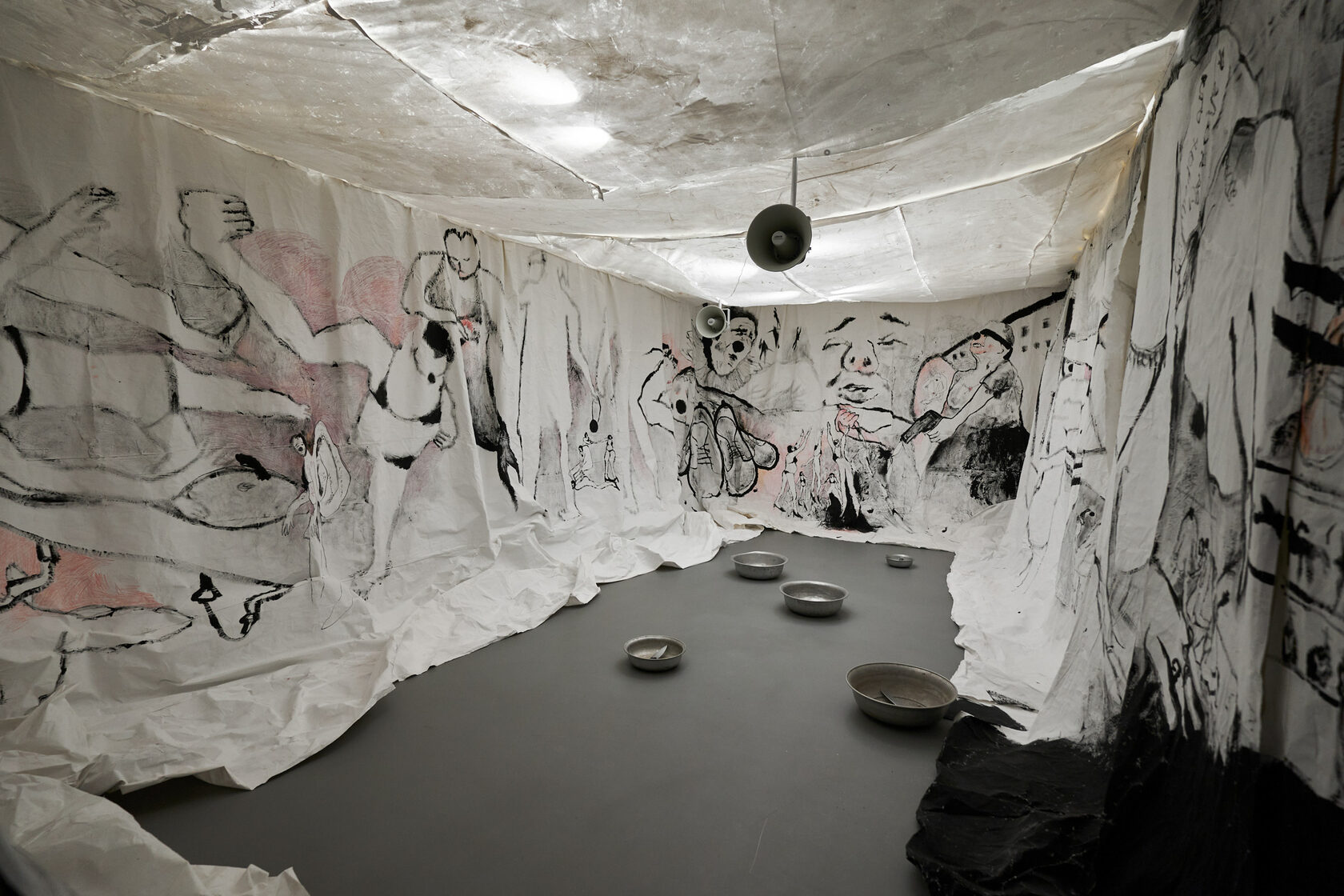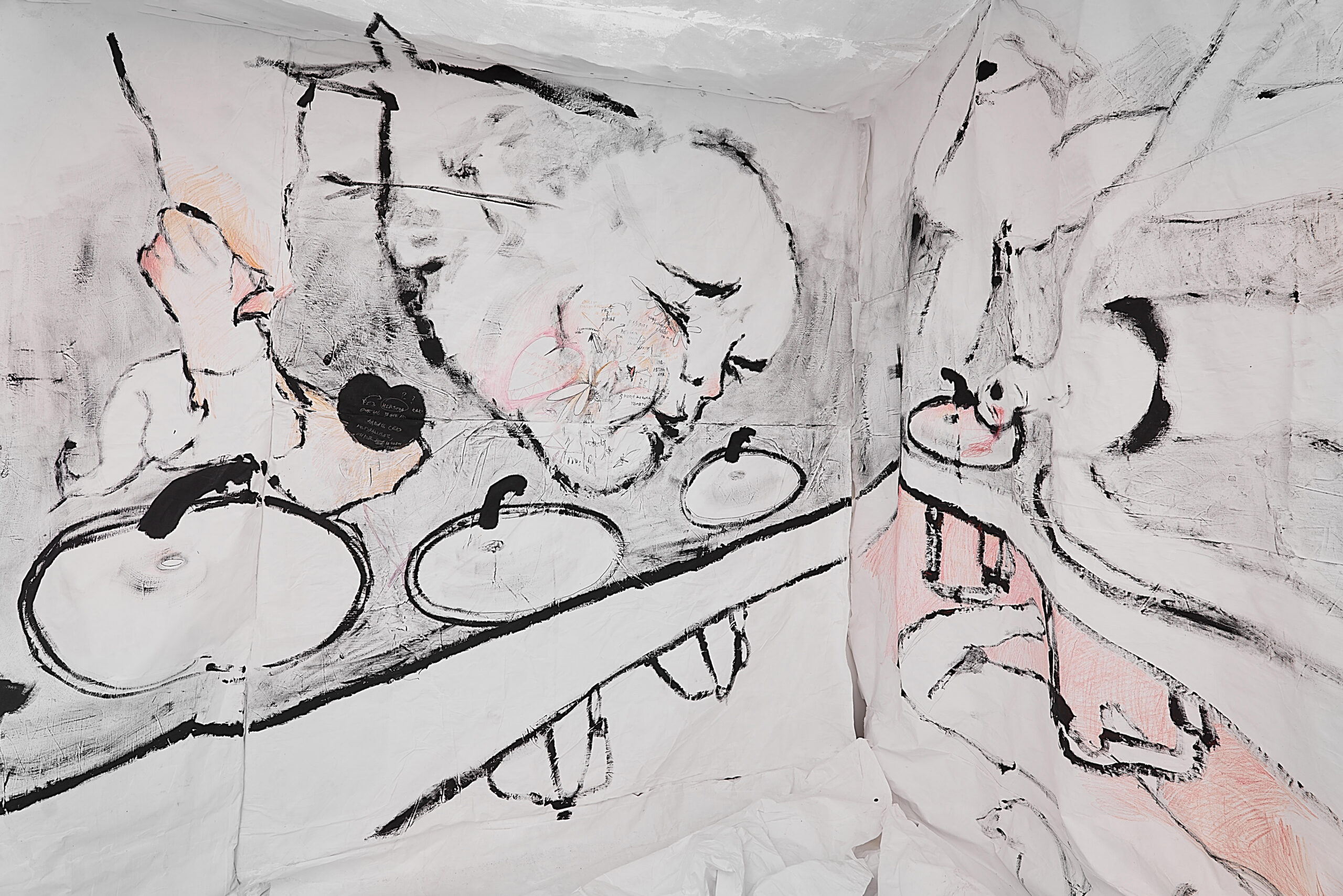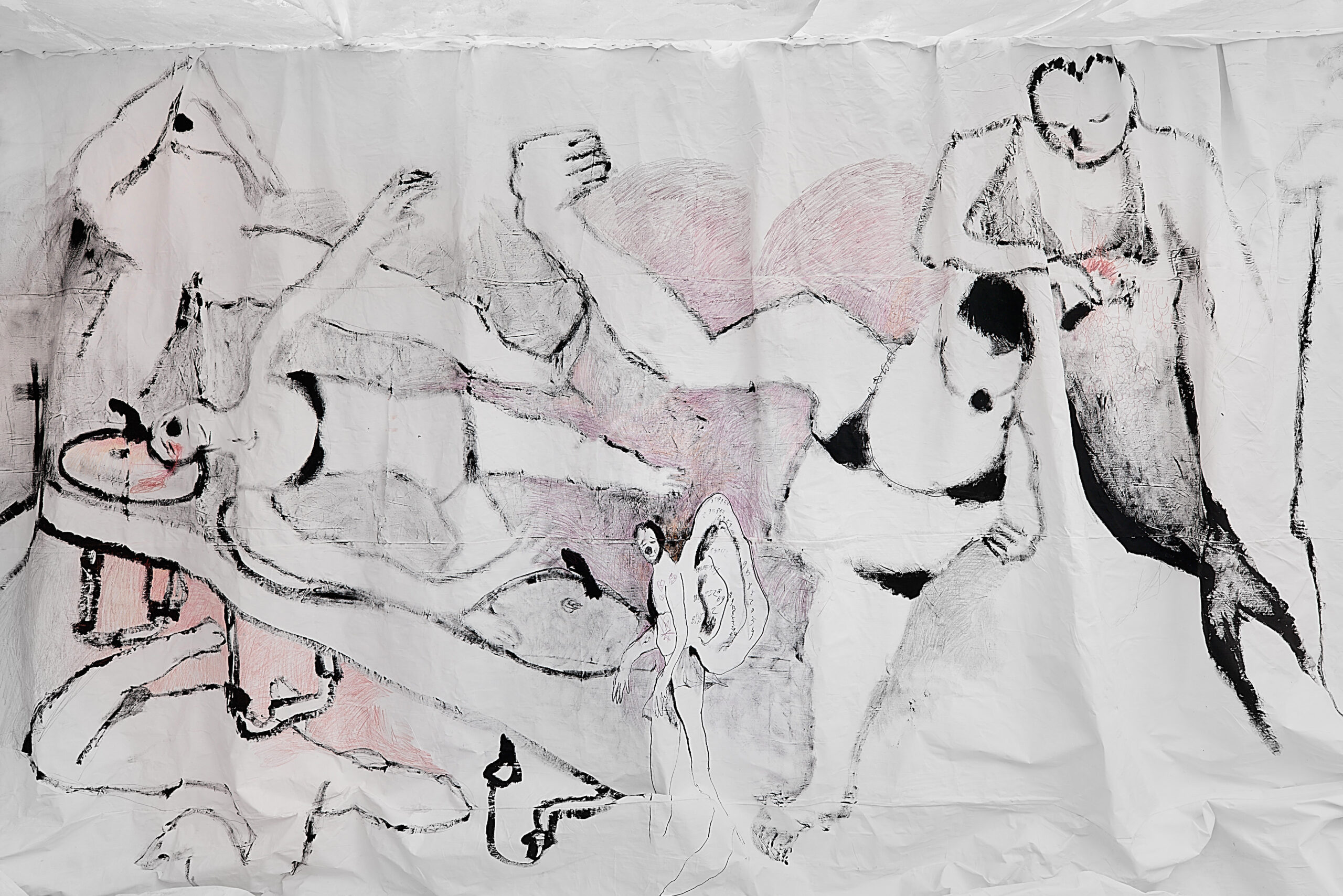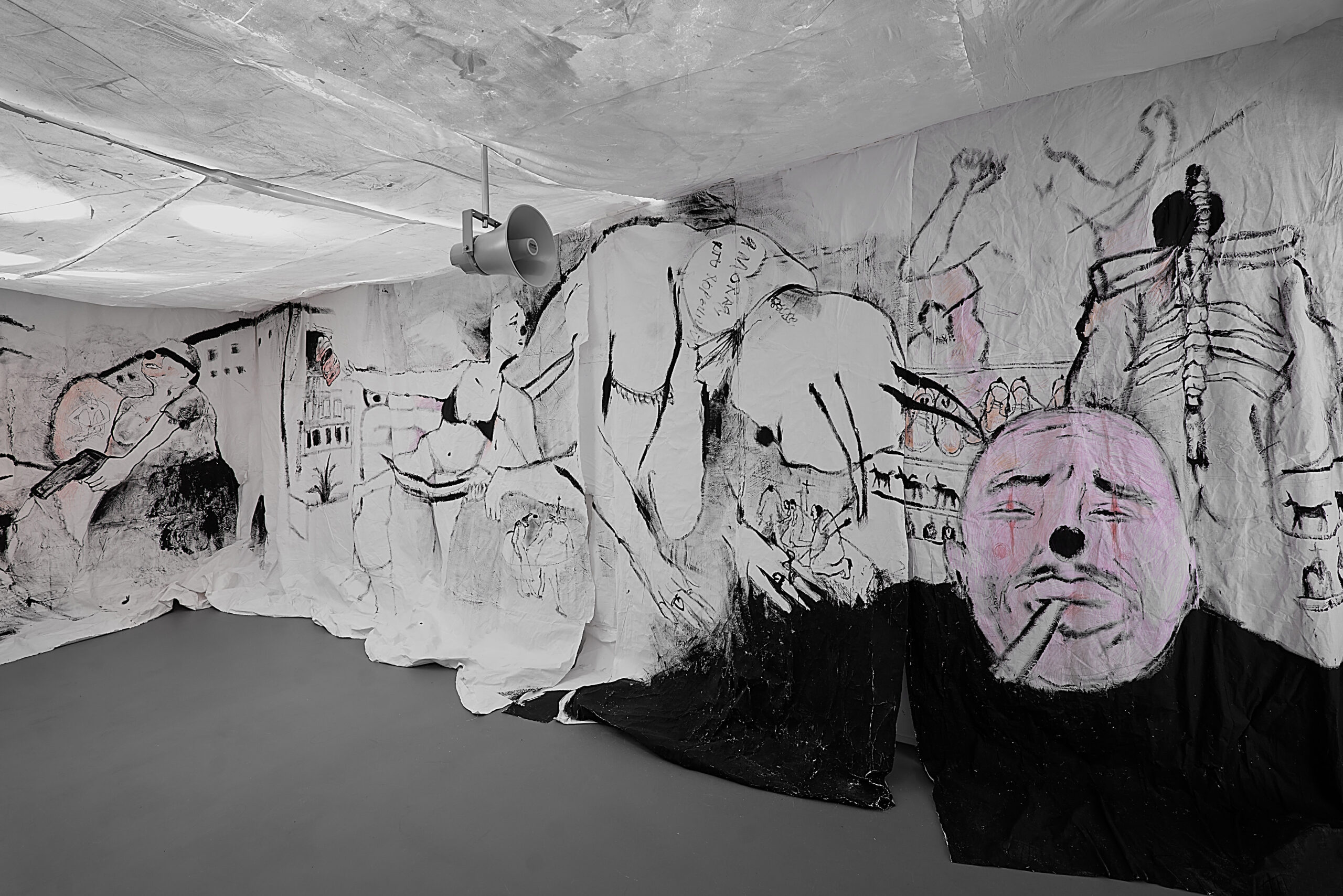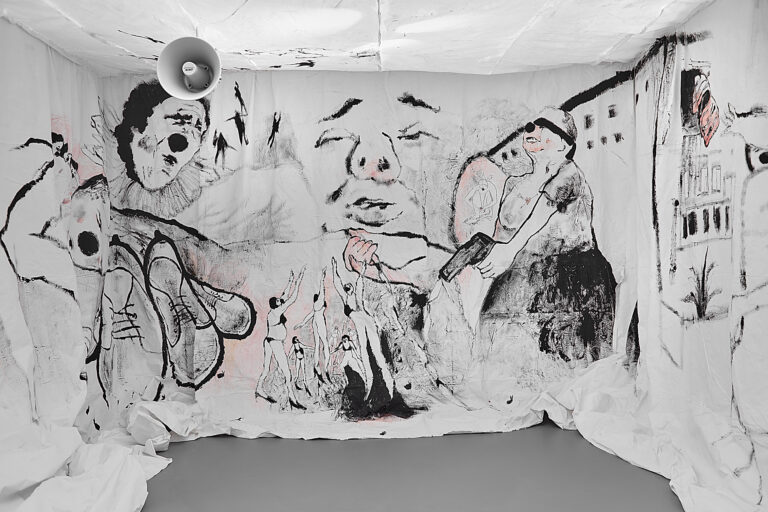
Togetherness
EXHIBITION DESCRIPTION
SISTEMA GALLERY presents Nastya Antipova’s installation «Togetherness», curated by Nadya October. The installation consists of 25 metres of fabric and completely covers the walls and ceiling of the exhibition hall. The artist spent a fortnight in the gallery painting the canvases with black and white graphic works. The graphic works here are the artist’s «slogans», but instead of textual messages they display images. The fabric canvases form a secluded space, but at the same time they reproduce the circumstances of street demonstrations, to which people usually come out with their banners. The installation is complemented by «slogans» from loudspeakers as well as household items – iron basins and knives – used by people in the early 20th century to create noise and draw attention to their march.
The installation «Togetherness» aims to create a feeling of belonging and empathy between people. Nastya Antipova engages with themes of disconnection, alienation and loneliness. In her work, the artist is seeking a utopian formula that would allow communication between people and unite society in solidarity and harmony. Antipova’s «slogans» become such formulas for her, and are depicted on the fabrics of the installation.
Antipova’s «slogans» are non-verbal, they are images of plots or situations. Slogans in demonstrations usually create a call to action, an expression of desires and needs, and these needs are shared. A slogan expresses a reaction to the world around us and a willingness to change and, in fact, it is already a fixation of the changes now taking place in society. In the work of Antipova, «slogans» also express common problems and concerns, but the artist focuses on the sphere of feelings, such as a wish for security, love and acceptance, fear of loneliness and sadness of being abandoned. The simple themes chosen by the artist are easy to interpret, recognisable and relatable to everyone.
In her practice, Nastya Antipova turns to semiotics: working with commonly known sign systems and inventing her own. As a consequence, the meaning of objects and figures is particularly essential in her work. The key figures of her plots are clowns, crowds men and jesters, they are tricksters or borderline characters who disguise their emotions behind a mask. The artist refers to these characters as «social armour» that allows you to be authentic without fear, as the true expression of your feelings remains unknown. The clown is always allowed to do more than what is considered «normal» as the artist states: «By putting on this mask, it can be easier for us to deal with difficult situations and reveal our feelings. This is why in Antipova’s «slogans» it is the clowns who become the agents of «collective desire».
The reference to the «slogan» format is also in Nastya Antipova’s technique itself. The artist works with strips of plain cotton fabric, because historically banners were made on fabrics. There is some evidence that in the early 20th century women wrote slogans on household sheets and used them at demonstrations or hung them out of the windows of their houses. For Antipova, working with fabric is a multi-stage process: first the strips are matched to one another, then sewn and primed, and only then graphic compositions – «slogans» – are created. This painstaking physical work reveals the artist’s very concept – the complexity and utopian nature of the idea of uniting people.
The installation is complemented by sound – each visitor can record their own «slogan» through a recorder, and in this way express themselves and join the «collective desire». At the end of the exhibition, the artist creates a sound installation made up of visitors’ «slogans», a «single slogan sentence», an attempt to capture the emotional tone of the present day, the voice of the time itself.
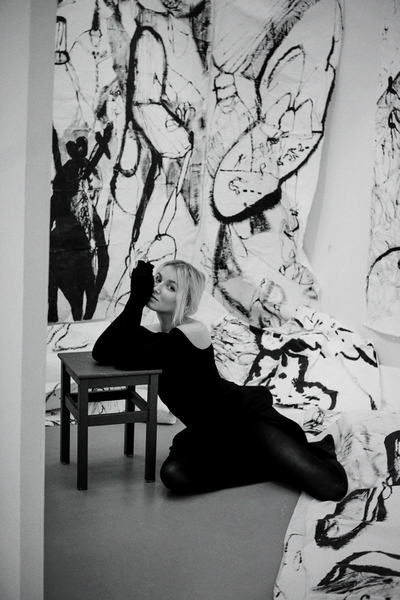
Nastya Antipova was born in 1997 in Tomsk. Graduated from Tomsk State University at the Faculty of Philosophy (2019). Graduated from the Institute of Contemporary Art named after Joseph Bakstein in Moscow (2022), a course at the Moscow Studio of Experimental Sound and Multimedia Technologies SA (2022). Participant in the online residency at the Geumgang Biennale of Natural Art, Republic of Korea (2021), residency at the Centre for Contemporary Experimental Art of Armenia in Yerevan (2022). Resident at the Vinzavod Centre for Contemporary Art's 7th season of Open Studios in Moscow (2022).
View artist's page